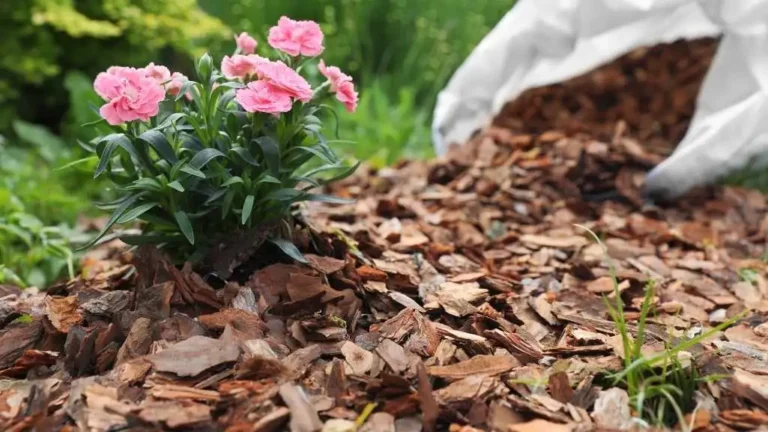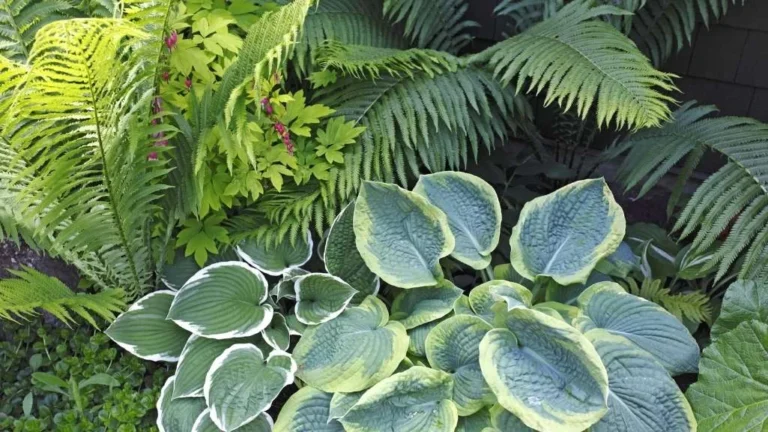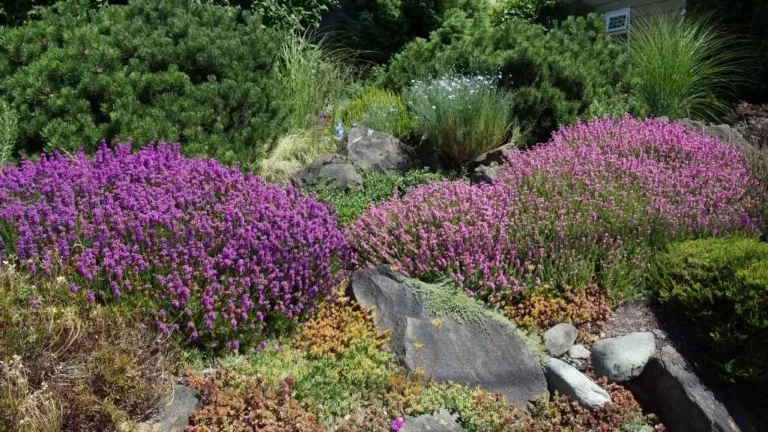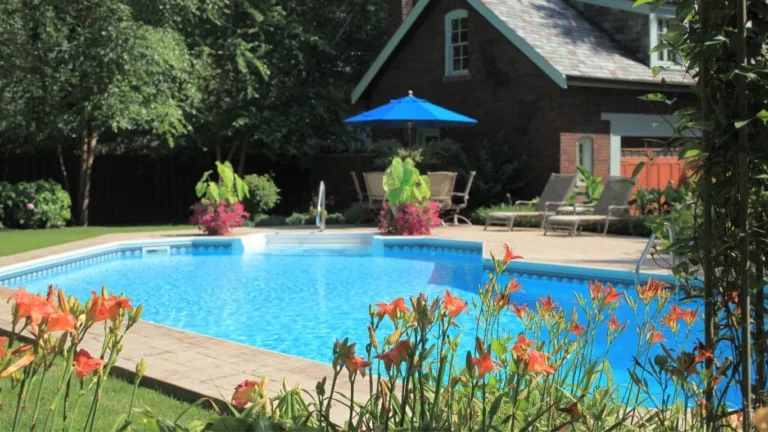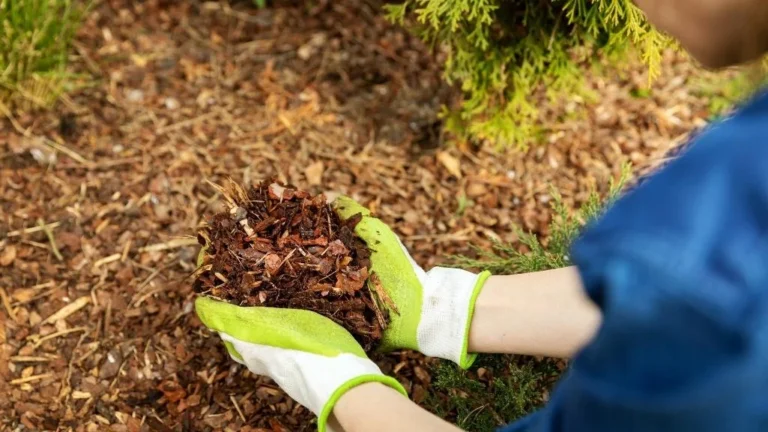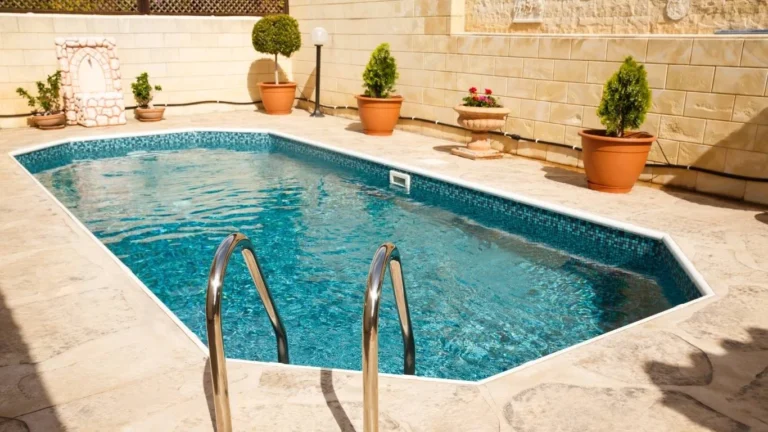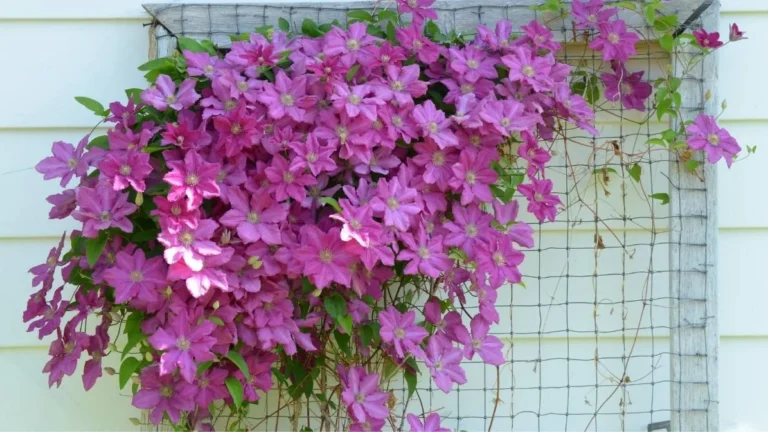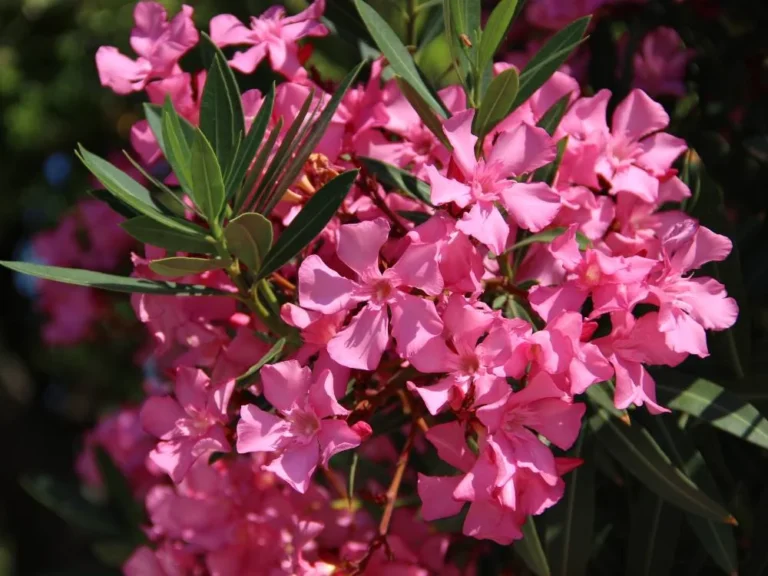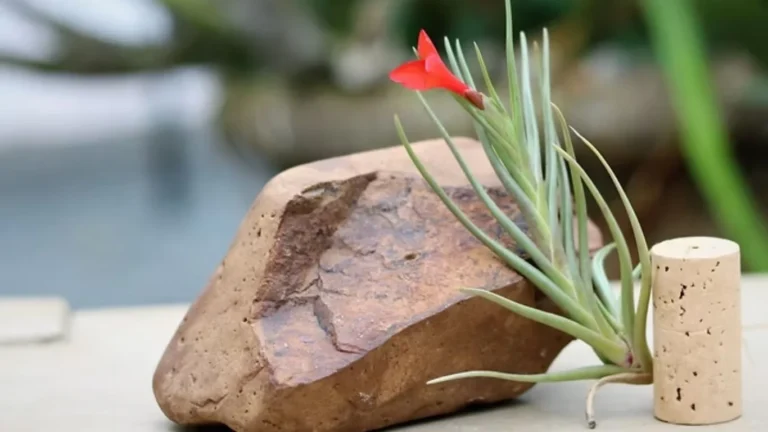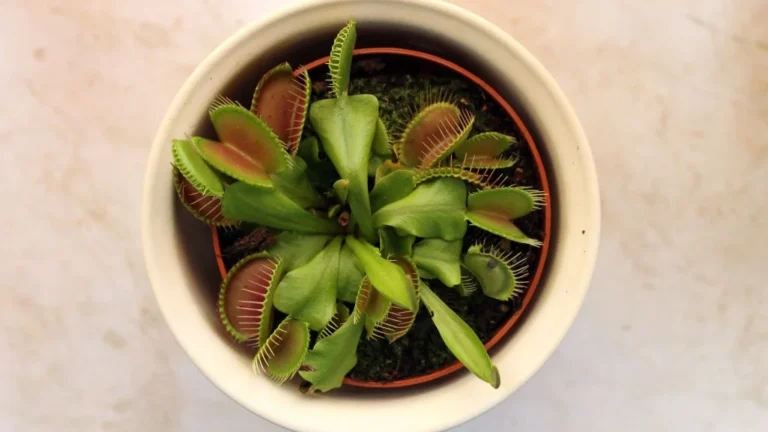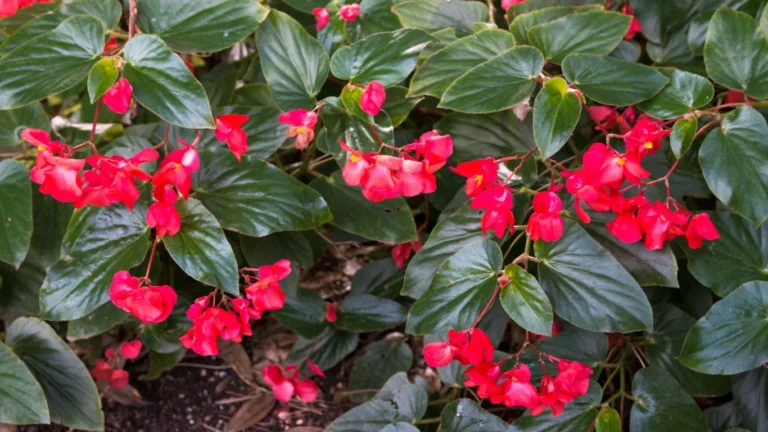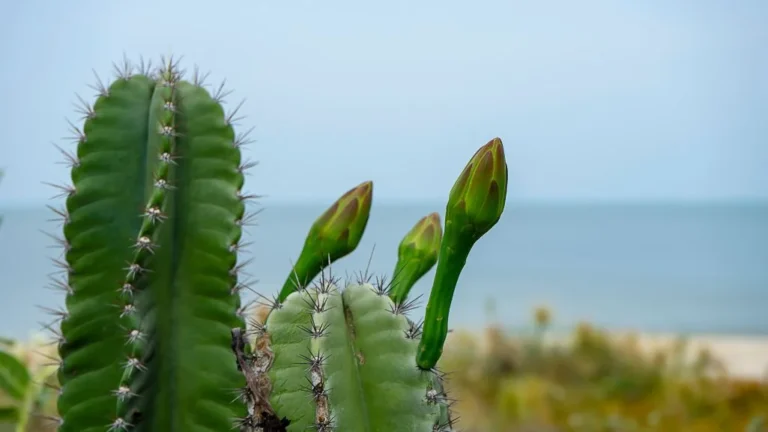This tropical plant is well-suited to indoor environments, flourishing in bright, indirect light and warm, humid conditions. Its lush, bold appearance makes it a versatile addition to any home or office, adding a touch of natural elegance and color to interior spaces.
Dieffenbachia, At a Glance
Scientific name | Dieffenbachia |
Family | Araceae |
Native | Central and South America |
Hardiness Zone | USDA Zones 10-12 |
Plant Type | Tropical perennial |
Bloom | Rarely |
Caution: Dieffenbachia plant is toxic to pets and children.
How Dieffenbachia Looks
Leaves
Dieffenbachia’s thick, glossy, leathery textured leaves are large, broad, and lance-shaped, tapering to a point. They are typically a vibrant green with striking variegation patterns, including white, cream, yellow, and light green spots, speckles, or streaks. The leaves are.
Stems
Dieffenbachia’s thick and sturdy stems, resembling a cane, are green. The plant sheds its lower leaves as it grows, revealing a distinct, slightly woody stem.
Height
Depending on the species and care conditions, Dieffenbachia can reach 3 to 6 feet when grown indoors. It can grow even taller in tropical outdoor settings, often reaching up to 10 feet or more.
Types of Dieffenbachia
There are about 50-60 recognized species of Dieffenbachia. In addition to these species, numerous cultivars and hybrids have unique leaf patterns, colors, and sizes. Some common types are Dieffenbachia Camille, Dieffenbachia tropic snow, Dieffenbachia exotica perfection, Dieffenbachia compacta, Dieffenbachia reflector, Dieffenbachia seguine, Dieffenbachia honeydew, Dieffenbachia carina, Dieffenbachia delilah.
Dieffenbachia’s (Dumb Cane Plant) Requirement
Requirements for Dieffenbachia plant at a glance
Elements | Requirement |
Sunlight | Moderate to bright, indirect sunlight |
Temperature | 60°F to 75°F |
Humidity | 60-70% |
Soil pH | 6-6.5 |
Soil mixture | Nutrition-rich, well-drained, moist |
Container | Container with drainage hole |
Water | When the top layer of the soil dries out |
Fertilizer | Once a month during summer and spring |
Note: The soil pH level indicates how acidic or neutral the soil is. On a scale of 1 to 10, with 7 indicating neutrality, a pH value less than 7 indicates acidity, while a value greater than 7 indicates alkalinity. Dieffenbachia plants require slightly acidic soil.
Mix the Soil Properly
Dieffenbachias (dumb cane plant) prefer a well-draining, nutrition-rich soil. The soil mix I use for Dieffenbachia contains the following elements.
- 50% regular garden soil,
- 20% pumice or perlite for enhanced drainage and aeration,
- 20% peat moss or coco-peat for moisture retention, and
- 10% orchid bark.
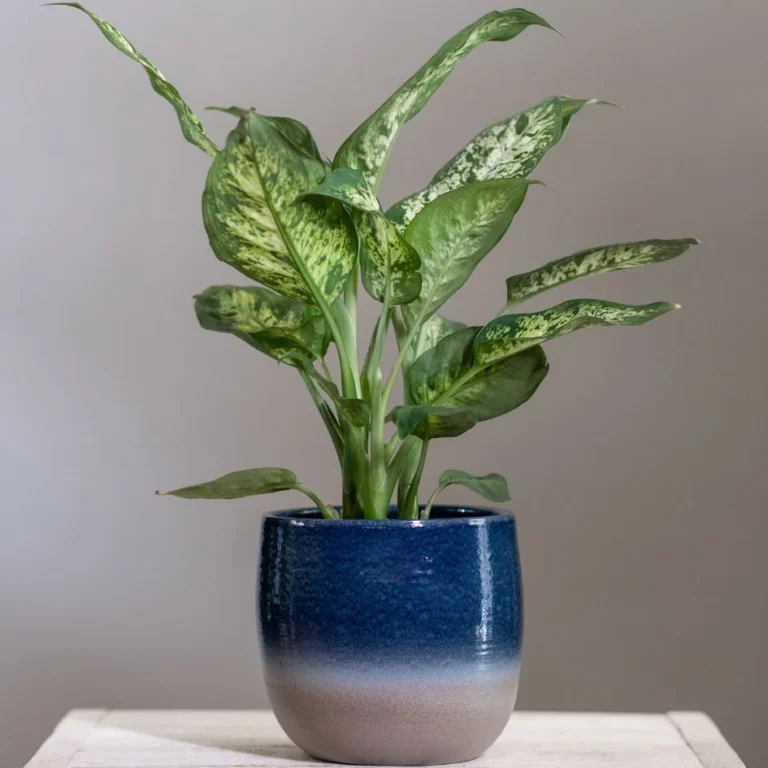
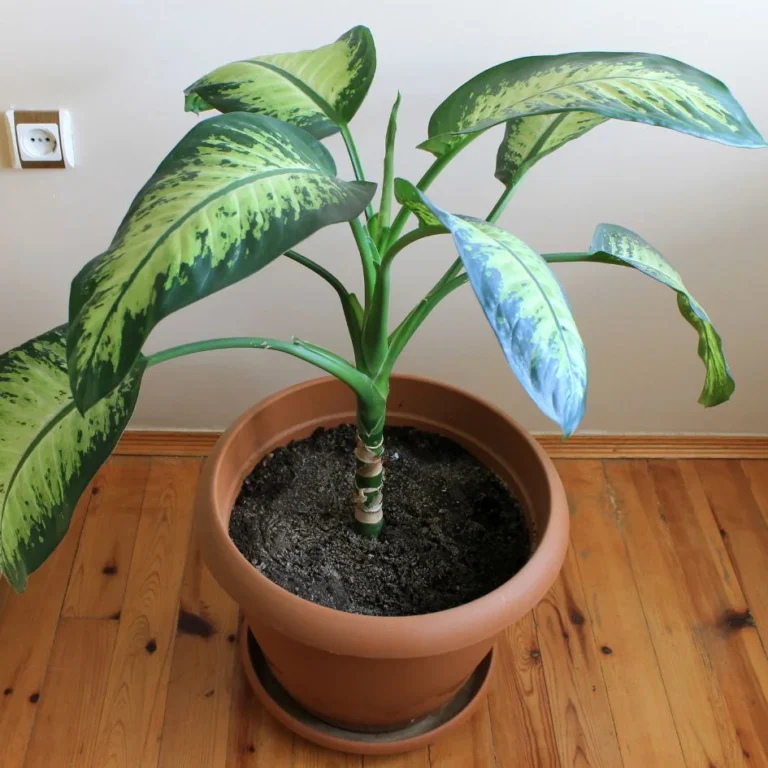
Choose the Right Container
Dieffenbachia plants have a fibrous, shallow root system, which means the roots spread near the soil surface, making them sensitive to overwatering. When choosing a container for Dieffenbachia, keep the following in mind:
- Select a pot that is 2 to 3 inches wider in diameter than the current one. The shallow roots don’t require a deep pot, so avoid a huge pot, as the excess soil in the pot holds water for too long, which can lead to root rot.
- Ensure the container has proper drainage holes to prevent waterlogging.
- Pots made of ceramic, plastic, or terracotta are suitable choices. Plastic pots retain more moisture than ceramic or terracotta, so remember that the container’s material affects the watering routine.
I’ve placed my Dieffenbachia in a beautiful white ceramic container that has enough drainage holes under it.
How Much Sunlight Dieffenbachia Needs?
Dieffenbachia plants (dumb cane plants) have big, tender, variegated leaves requiring moderate to bright indirect light.
- Dieffenbachia thrives in bright, indirect sunlight, similar to the dappled light it receives in its native tropical habitats.
- Dieffenbachia’s large tender leaves cannot tolerate direct sun exposure; this can lead to leaving burning and losing variegation.
- In low light conditions, the plant becomes leggy. So, consider using grow lights to provide sufficient light in that case.
I have kept my Dieffenbachia next to a north-facing window of my house, where it gets indirect, bright light throughout the day.
When & How to Water Dieffenbachia (Dumb Cane)
Dieffenbachia prefers slightly moist soil and humid environments. But the plant does not like to sit on water for an extended period. So, keep the following point in mind while watering.
- Water the plant when the top layer of soil dries out. Do the finger dip test or use a moisture meter to check the soil’s moisture level.
- Water the plant with room-temperature water.
- Ensure every layer of the soil absorbs water by watering until it drains out of the drainage holes.
- Adjust the watering routine according to temperature, humidity, and container material. Warmer temperatures, lower humidity, and certain pot materials like terracotta may require more frequent watering, while cooler temperatures, higher humidity, and plastic pots may require less.
- Dieffenbachia requires high humidity, so mist the plant or install a humidifier to maintain the required humidity level.
Typically, I water my Dieffenbachia once or twice a week during summer and once every two weeks in winter. I always allow the top inches of the soil to dry out before watering.
Fertilizer for Dieffenbachia
Dieffenbachia (dumb cane) plants are known for their lush, large, variegated leaves. To maintain its beauty, the plant requires a balanced diet of essential nutrients.
- Use a balanced, water-soluble fertilizer with an N-P-K (nitrogen-phosphorus-potassium) ratio of 20-20-20 or a similar formulation.
- Put fertilizer once a month during summer and spring. Avoid fertilizing in winter, as the plant goes into dormancy.
- Use half the recommended strength to avoid over-fertilizing.
- Water the plant properly before fertilizing to avoid root burn.
Caution
Handling the plant can cause skin irritation, so it’s advisable to wear gloves during pruning, repotting, and propagating. Keep it out of reach of children and pets.
When & How to Re-pot
Re-pot the Dieffenbachia (dumb cane) when-
- Roots start to come out of the pot’s drainage holes
- Plant growth slows despite proper care and
- Soil does not hold water.
I usually report my Dieffenbachia every 1.5-2 years after observing the signs mentioned above.
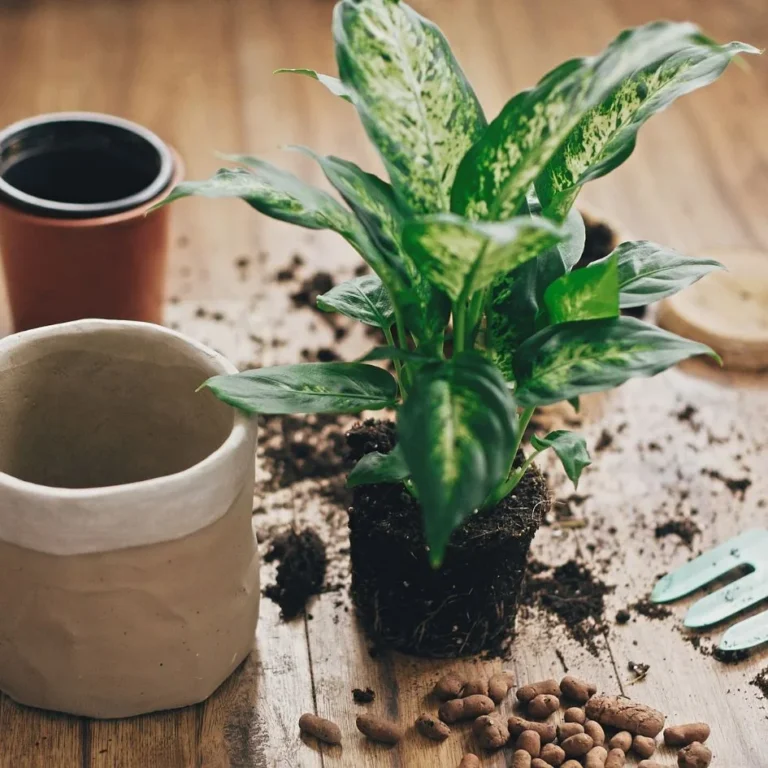
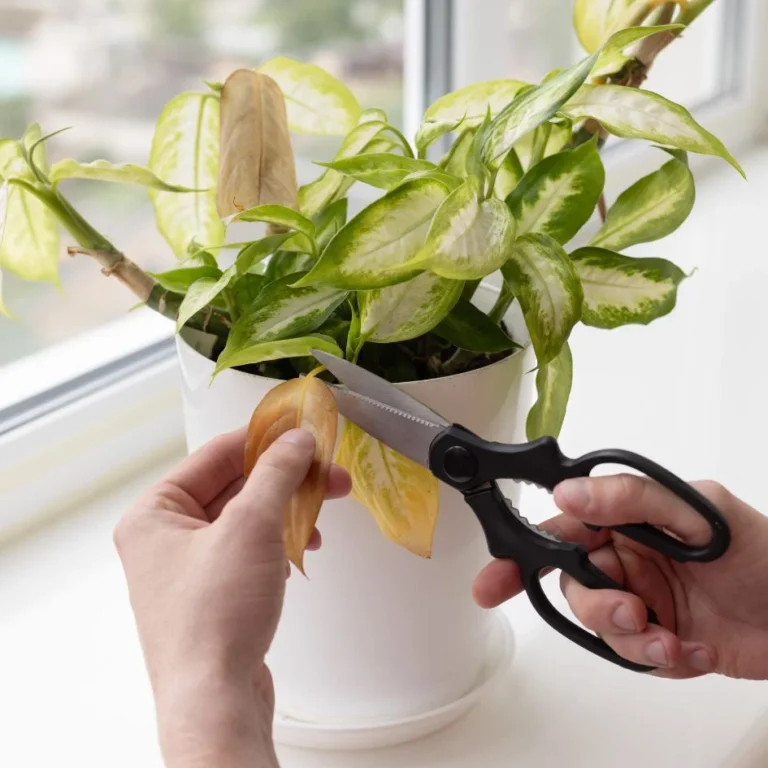
Prune to Thrive
Dieffenbachia plants need pruning in the following cases:
- The plant loses its lower leaves and gradually takes on a leggy shape; in that case, cutting the leggy stem promotes new growth.
- Leaves turn yellow, become damaged, or die.
- Leaves get heavily infested.
Protect Dieffenbachia from Pest
Pests like spider mites, aphids, mealybugs, scale insects, and thrips can attack Dieffenbachia plants.
Steps for Managing Infestation on Dieffenbachia
- Move the plants from other plants to prevent spread.
- Determine the type of pest for proper treatment.
- Remove pests by sparing water or wiping the leaves with alcohol-soaked cotton fabric.
- If necessary, cut off heavily infested leaves or stems.
- Spray the plant with insecticidal soap or neem oil.
Dealing with Common Issues
Leaf yellowing
- Leaves yellowing is a common issue for Dieffenbachia. If the leaves from the lower part of the plant turn yellow without any other signs, such as wilting or brown spots, then it’s a sign of aging. And this is completely okay.
- If all the leaves start to turn yellow, the main reason can be overwatering. So, let the top layer of soil dry before watering.
- Underwatering can also cause leaf yellowing. Check the soil. If it’s too dry, then underwatering is the reason.
- Another reason for yellow leaves can be a lack of nutrition. Dieffenbachia has big leaves, and it requires a sufficient amount of nutrition. Low nitrogen is mainly liable for leaf yellowing. In that case, a balanced fertilizer such as NPK 10-10-10 should be used.
- Dieffenbachia requires bright indirect light. Low light can cause leaf yellowing, too.
Leaf dropping
- If Dieffenbachia drops old leaves, it is a process of aging, and it is normal. Prune the leaves, and it’s good to go.
- But if the leaves turn yellow before falling and the soil is soggy, then it’s a sign of overwatering.
- On the other hand, if the leaves become dry and brittle before falling off, it’s a sign of underwatering.
- Another reason for leaf dropping is sudden environmental change. Low humidity, temperature stress, and transplant shock can cause leaf drop. Use a humidifier for a low humid environment, and keep the plant in a stable environment. To avoid transplant shock, gently handle the plant during the repotting process.
Brown spots on leaves
- Root rot causes brown spots on leaves. Root rot occurs due to overwatering and waterlogging. If the soil looks too soggy, repot the plant immediately with fresh, dry soil. During repotting, trim the rotten, mushy roots.
- Fungal disease is another reason for brown spots on leaves. In case of fungal disease, the spot can be brown, yellow, or black with a powdery, fuzzy, or moldy appearance on the leaves. In case of fungal disease, use fungicide or neem oil for prevention.
- Dieffenbachia is sensitive to fluoride and chlorine. If your tap water contains these chemicals, brown spots can form. I recommend using rain or distilled water for Dieffenbachia.
Leaves getting small
- This issue can happen because of inadequate light, lack of nutrition, and root-bound. Observe the plant and what it lacks and treat it according to that.
Propagation Process of Dieffenbachia
Dieffenbachia can be propagated through stem cuttings and root division.
Root division
Choose and prepare the plant
Choose a healthy plant without a disease for propagation. If possible, water the plant thoroughly 1/2 before starting the propagation. This will help to get the plant out of the container easily.
Remove the plant from container
Gently turn the pot on its side and carefully slide the plant out, supporting the base to avoid damaging the stems or leaves. If the plant is stuck, you can lightly tap the pot or run a knife around the edge to loosen it.
Remove soil around the roots
Snake off or gently remove soil from around the roots. Inspect the roots for any disease or rot.
Divide the roots
Using a sharp, sterilized knife or garden shears, carefully cut the root ball into sections. Each section should have at least one healthy stem and a good number of roots. Ensure each division has enough roots to support the plant’s growth.
Plant the Divisions
Firstly, prepare a pot with well-draining fresh soil and then place each division in its pot, spreading the roots out gently. Fill in around the roots with soil, ensuring the plant is stable and at the same depth it was originally growing. Press the soil down lightly to secure the plant. Water the newly potted divisions thoroughly to help settle the soil and eliminate air pockets. Keep the soil evenly moist but not soggy.
Aftercare Routine
Place the newly divided plants in a warm, bright location with indirect light. Avoid direct sunlight to prevent stress. Monitor the plants closely for the first few weeks, ensuring they are not overwatered or exposed to drafts.
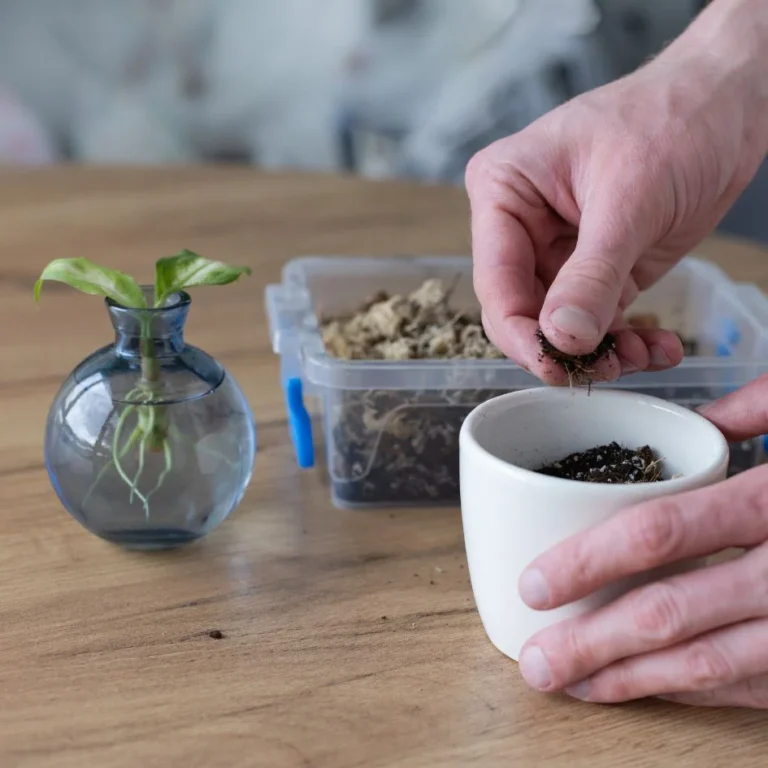
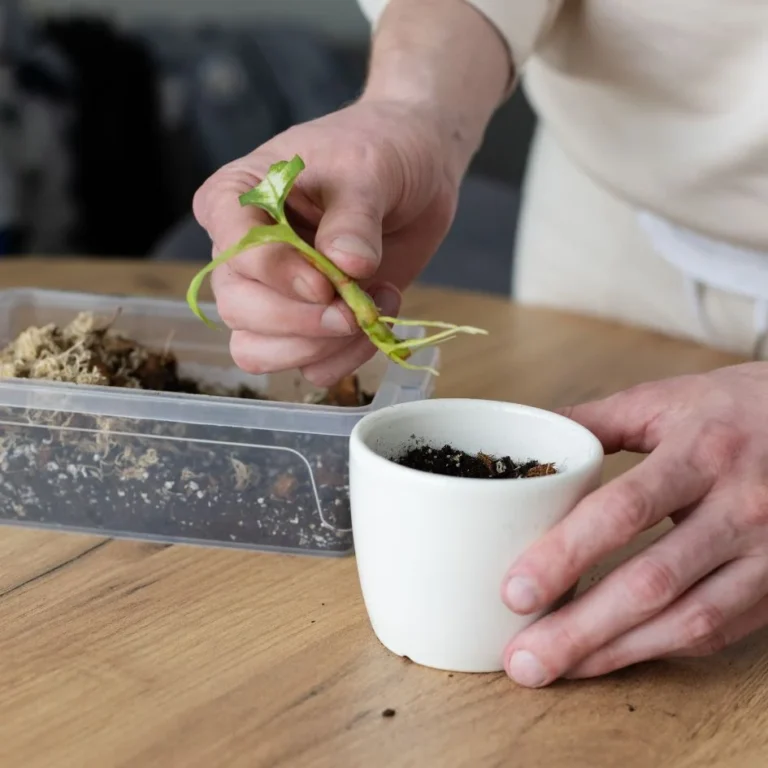
Stem cutting
Choose stem
Select a healthy stem from the mother plant with several nodes (the points where leaves emerge).
Cut the Stem
Use a sterilized, sharp knife to cut a 4-6-inch stem section. Remove the lower leaves from the cutting, leaving a few leaves at the top. I prefer to dip the cut end into the rooting hormone for the fast growth of roots, but this step is optional.
Placement of the stem
Plant the stem in a pot filled with well-draining potting mix. Water the soil thoroughly to settle it around the cutting, keeping it consistently moist but not waterlogged.
Conversely, the stem can be placed in water instead of soil.
Aftercare Routine
Position the pot in a stable, warm environment with bright, indirect light. Rooting can take several weeks to a few months; be patient and regularly check for new growth. Once a healthy root system has developed, transplant the cutting into a larger pot with regular soil.
Tips for Diffenbachia
- Rotate the plant once a week for even growth.
- Aerate the top level of soil from time to time to maintain good drainage.
Frequently Asked Question
How often should Dieffenbachia be water?
Dieffenbachia likes to be in moist soil, but soggy soil can also lead to root rot. So, water the plant when the top layer of the soil dries out.
Do Dieffenbachia (dumb cane) flower?
Yes, Dieffenbachia (dumb cane) can flower, but it rarely does so indoors. When it does, the flower resembles a greenish-white spathe surrounding a spadix, similar to a peace lily. However, the flowers are often removed because they can detract from the plant’s foliage and sometimes cause the plant to decline.
What are the benefits of Dieffenbachia?
It helps remove toxins like formaldehyde and benzene from the air, improving indoor air quality. It can also help increase humidity levels in a room, which is beneficial for skin and respiratory health.
Is Dieffenbachia safe for humans?
No, Dieffenbachia is not safe for humans if ingested. The plant contains calcium oxalate crystals, which can cause severe irritation, burning, and swelling in the mouth, throat, and digestive tract. Ingesting the plant can lead to difficulty swallowing, breathing issues, and even temporary speech loss, which is why it’s called “dumb cane.”



